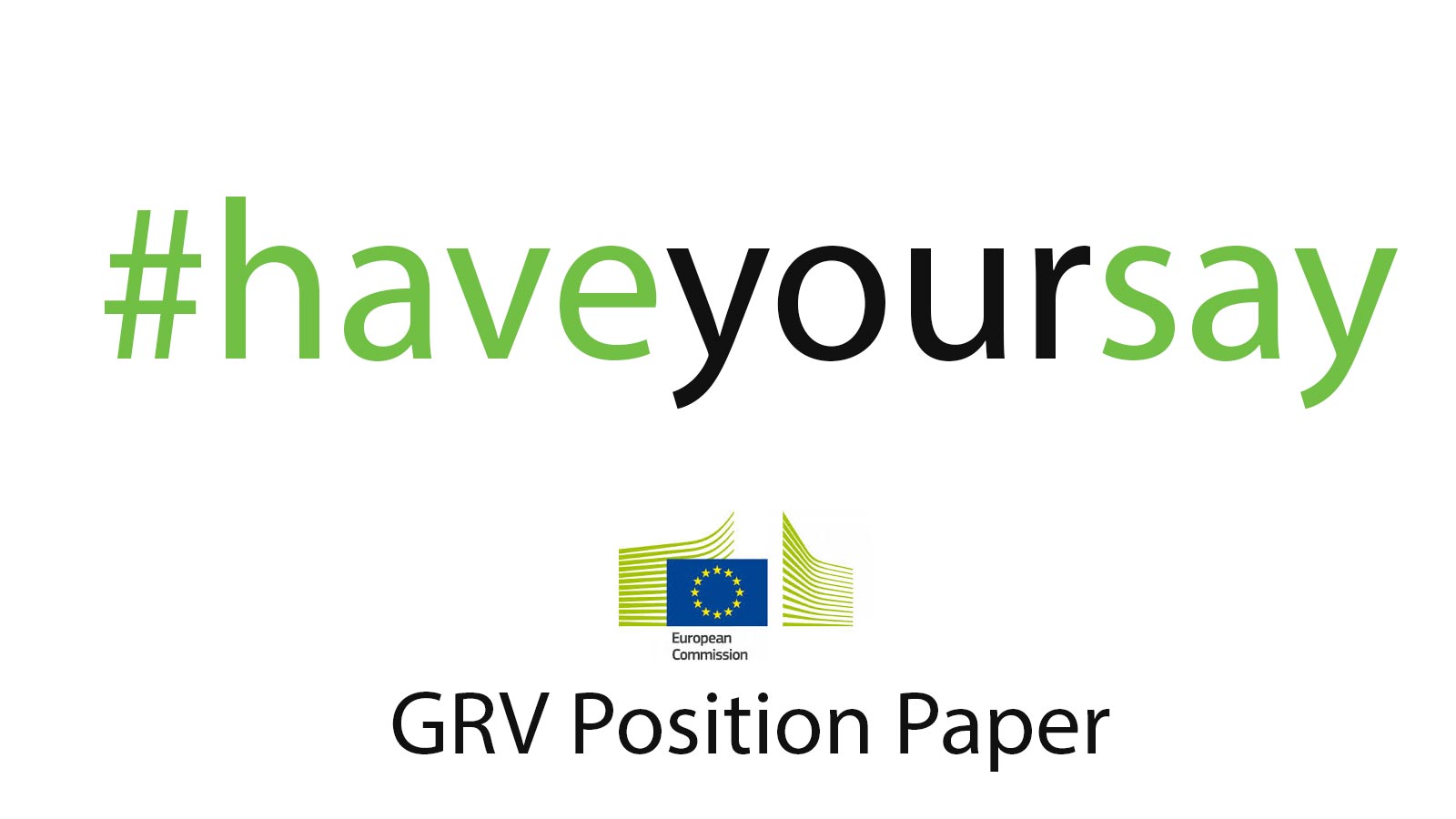GreenroomVoice has substantial experience with European SMEs (brands and suppliers) in transparency matters since 2013.
• As consultants in sustainability communication and also as private consumers we welcome the fact that efforts will be made by the European Commission to address the issue of “green washing”, misleading communication, confusing the consumer with incomparable claims and the way marketing methods are being used to spread false ideas on sustainability.
• While legislation is essential to achieving policy objectives and creating benefits for business and society, it can however also generate an unwanted set-back of the stronger pioneering industry efforts by wanting to find the smallest common denominator.
• We believe that an eye-to-eye approach, which takes a strong stance to confront the audience with expert knowledge in a way everyone can relate to, and understand the dynamics of the actual activity, is key to create credibility and trustworthiness whilst educating the consumer.
• In order to have a fair understanding of the ecological and social activities of brands, from very small enterprises to very large corporations, we need to guide the audience rather then decide for them with “another” label or certification indicating a threshold of what is “more sustainable”.
• We strongly believe, that communication cannot be certified, but explained with the relevant facts easily accessible for everyone to see and understand.
The GreenroomVoice online platform is the space for Outdoor Sports Brands and Suppliers to communicate sustainability practice. GreenroomVoice takes the consumers perspective to the vast complexity of sustainability information, in order to enable a conscious buying decisions. This approach is valuable to the consumer, retail and media for finding systematic information effectively. The fact checked sustainability profiles on our website build transparency and create a level playing field that is meaningful to the audience whilst fostering trustworthy language about CSR brand activities and product performance. GreenroomVoice also presents regular showcases at relevant European outdoor tradeshows about the industries “hot topics”.
GreenroomVoice is a Swiss based agency in the process of migrating to Germany. We are a team of sustainability and communication experts.
Operating from a journalistic and engineering point of view we are conscious about the most crucial aspects and keywords on which consumers and other stakeholders base their opinion about brands sustainability performance.
We believe in enabling the audience by presenting the actual and relevant practice in sustainable and social matters of our members and partners.
To maintain a profile on the GreenroomVoice website means to answer to all relevant questions around the ever evolving practice of day-to-day sustainability activities of a company. With a scientific methodology we evaluate the topics from all possible angles and aim to draw the most holistic picture.
Anyone who looks at a GreenroomVoice sustainability profile, or visits one of our showcases at a tradeshow learns about the very individual approaches of the different players in relation to the broader context. This reflects the reality of the textile business and their relationship to the global challenges but also opportunities.
With the provided information as a foundation we enable the audience to make an informed decision according to their own value system.
In our showcases, we aim to communicate the approaches of brands but also suppliers towards the challenges of our times. Every year, we choose a topic that highlights an area of potential development for our industry. Brands and suppliers can communicate their position, innovation and solution in form of a designated informative poster. During guided tours, the individual brands can share their experience and answer questions. We host these tours for students, journalists, bloggers and industry.
We also facilitate and moderate panel discussions on the respective topics to further anyone’s experience and exchange views.
Being journalists in the action sports industry, the first massive wave of green washing hit us in 2008. Many brands in this field started to communicate heavily on PET recycled material as being the “be all and end all of sustainability”. Doing research, inspired by the general direction of “going green” of a beloved industry, we quickly came to the conclusion that consumers are being intentionally or unintentionally confused by marketing messages.
In order to get a clear, fair and trustworthy picture of existing possibilities and the actual implementation of ecological and social responsibility by the brands, GreenroomVoice as a platform was born.
Respectively, as engineers in the global textile industry we know about the complexities and technical possibilities within a branch (technical textiles) and see the lack of communication believing in the potential of factual transmission of what is already possible to enable the consumer (retail, media, etc).
This eye-to-eye approach takes a strong stance to confront the audience with expert knowledge in a way everyone can relate to and understand the dynamics the actual activity.
In our experience the lack of understanding of sustainability practice by marketers and public relations results often in claims and “phrases” which are factually not correct or taken outside the relevant context. The product can still be valuable in regard to ecological and social aspects, but the communication can be misleading.
The GreenroomVoice Transparency Tool
In order to create a reasonable and trustworthy result, which is comparable and stays within the relevant context we use the GRV Transparency Tool. This consists of a set of questions, which is reviewed once a year in order to adapt to changes in certification, legislation, innovation and day-to-day practice of the status quo of the industry.
All relevant questions are answered and visualized in their relation to the global challenges.
Within the GRV Transparency Tool, we integrate all relevant practices, standards, guidelines and auditing schemes and/or alternative documentation especially with smaller businesses. The GRV Transparency Tool supports all existing schemes, auditing and certification systems, which create measurable outcomes and even translates activities, which would not jet fit in the existing systems to make them comparable.
Since we have been dealing with all sizes of brands, from “one man start up’s” to larger enterprises within an industry that has a huge potential and taste for innovation, one thing became very clear to us over the years:
In order to have a fair understanding of their ecological and social activities, we need to guide the audience rather then decide for them with “another” label or certification.
We strongly believe, that communication cannot be certified, but explained with the relevant facts easily accessible for everyone to see and understand.
There are many reasons for this assumption:
For one, especially smaller brands often don’t have the structure or financial means to adhere to certification for environmental and social achievements, let alone for communication.
For very small businesses, the cost of an external certification is often in no suitable relationship to the gain and would not necessarily engage in a more positive development in their supply chain.
Secondly, we also came across medium size outdoor (equipment) businesses, which have a very individual supply chain configuration, and whilst fulfilling the topical requirements, they cannot be certified by certain recognized 3rd party organisations because of structural reasons.
3rd party certification does make a lot of sense for brands of a certain size and we do integrate all available proof of measurable environmental impact and social responsibility and support those with in the GRV Transparency Tool.
Thirdly, another very important aspect is how to deal with innovations: they naturally don’t fit into any category. May this be a new process, innovative business model or the development of new materials. And even if extensive studies exist, which prove the positive effect any of these might have on the environmental crisis, they might not yet fit into a recognized certification scheme.
One more reason is the fact that many individual companies and retailers have had to come up with their own label in the meantime – all of which imply a threshold to separate “more eco-friendly” from “less eco friendly” on different levels and criteria. And while this makes sense within their individual universes these labels are not comparable with each other for the most part, but represent existing systems and efforts to help the consumer toward a more sustainable buying decision, and which the consumer already had a certain exposure and experience with. If EU legislation adds to the existing variety of corporate labels, the difficulties of communicating the differentiation between all of those and why the EU label is more or less meaningful, etc. can potentially be enormous.
For these reasons, we at GreenroomVoice have always believed in guiding the audience and telling them the complete story, rather then ticking checkboxes for certifications in all case scenarios. Which also means that there is no threshold within the GRV Transparency Tool as in “green” or “red” but different levels on all three vectors (Brand Management, Brand Commitment and Product). A transparent way to look at a situation, where all aspects are mentioned and explained helps to make an individual decision in alignment with ones own value system. For example one person will want to make sure no animal has been potentially harmed in any way and for another it will be more important, that there are no hazardous chemicals involved in the process of making the item, some have a strong focus on social issues, whilst others need to know about climate related efforts … and the list goes on. In every product all these issues matter, but are usually communicated in fragments, and rarely as a whole picture.
* We want clarity for the audience (Consumer, retailer, media)
* There needs to be a connection between an expert committee to decide on the relevant topics and a communication guideline.
* The info needs to be complete, understandable, relevant and contextualized
* All subjects need to be covered – scientific outlook
The textile industry as a whole, especially the more technical branches, like the outdoor sector is extremely complex in materials, applications and cost structure. Whilst these materials are a daily part of our lives, very view consumers understand the implications of manufacturing and sourcing. In order to make an informed and conscious buying decision according to ones own values, which will eventually lead to a more sustainable way of consumption, we need to establish transparency and guidance on a level playing field. We need to create context and the ability to compare topics, which are actually comparable.
Communication has been very much part of every brands culture, to pass on their core message, what they believe in and why they make their products. Much like the right of free speech.
The issue with this is, that experts in communication are not necessarily experts in sustainability. Consequently we need to create a framework for communication, that assures a wholesome approach in order to give the consumer a chance to actually know what they are buying and what kind of consequences the every day act “to vote with ones €” has.

